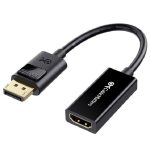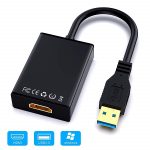HDMI ARC (Audio Return Channel) has revolutionized home entertainment setups, simplifying audio connections between TVs and soundbars or AV receivers. However, like any technology, it’s not immune to occasional hiccups. If you’re facing the frustrating issue of HDMI ARC not working, fear not! Hdmi arc not working? We’re here to guide you through a series of troubleshooting steps to get your audio flowing seamlessly once again.
Before delving into the troubleshooting process, let’s briefly recap what HDMI ARC is and how it works. HDMI ARC allows audio signals to travel both ways between your TV and an audio device using a single HDMI cable. This eliminates the need for separate audio cables, simplifying your setup and reducing cable clutter.
Contents
Common Causes of HDMI ARC Issues
A variety of factors can contribute to HDMI ARC malfunctions. Let’s explore some of the most common culprits:
- Incorrect Settings: Improper configuration of audio settings on your TV or audio device can disrupt the ARC connection.
- Incompatible Devices or Cables: Not all HDMI ports or cables support ARC functionality. Older devices or low-quality cables might lack the necessary capabilities.
- Firmware Glitches: Outdated firmware on your TV or audio device can lead to compatibility issues and disrupt the ARC connection.
- Hardware Malfunctions: In rare cases, a faulty HDMI port or internal component within your TV or audio device may be the root cause of the problem.
Step-by-Step Troubleshooting Guide
Now that we understand the potential causes, let’s walk through a systematic troubleshooting process to resolve your HDMI ARC issue.
Check the Basics
- Cable Connections: Ensure that the HDMI cable is securely plugged into the HDMI ARC ports on both your TV and audio device. Look for labels indicating “ARC” or “eARC” on the ports.
- Power Cycle: Turn off both your TV and audio device, unplug them from the power outlet, wait for a few minutes, and then plug them back in and power them on. This simple reset can often resolve minor glitches.
Verify Settings on Your TV
- Enable HDMI-CEC: HDMI-CEC (Consumer Electronics Control) allows devices connected via HDMI to communicate with each other. It’s often required for ARC to function correctly. Enable this setting on your TV.
- Select Correct Audio Output: Navigate to your TV’s audio settings and ensure that the audio output is set to “HDMI ARC” or “eARC” (if supported).
- Disable Other Audio Outputs: If you have other audio outputs connected, such as optical or analog audio cables, disconnect or disable them to avoid conflicts.
Verify Settings on Your Audio Device
- Enable HDMI-CEC: Similar to your TV, enable HDMI-CEC on your audio device if available.
- Select Correct Input: Choose the HDMI input on your audio device that corresponds to the HDMI ARC port on your TV.
- Check Audio Settings: Some audio devices have specific settings for ARC functionality. Consult your device’s manual to ensure these settings are configured correctly.
Update Firmware
- TV Firmware: Check for firmware updates for your TV and install them if available. Outdated firmware can cause compatibility issues with ARC.
- Audio Device Firmware: Similarly, check for firmware updates for your audio device and install them if necessary.
Factory Reset (Last Resort)
- TV Reset: If all else fails, consider performing a factory reset on your TV. This will restore all settings to their defaults, potentially resolving any configuration issues. Remember to back up any important data before proceeding.
- Audio Device Reset: If the problem seems to be with your audio device, consult its manual for instructions on how to perform a factory reset.

Additional Tips and Tricks
- Avoid HDMI Adapters or Extenders: These can sometimes interfere with ARC functionality. Connect your devices directly whenever possible.
- Check for Third-Party Device Interference: If you have other devices connected to your TV or audio device via HDMI, try disconnecting them temporarily to see if they’re causing any conflicts.
- Consult Manufacturer Support: If you’ve exhausted all troubleshooting steps and the issue persists, contact the manufacturer’s customer support for further assistance. They may have specific recommendations or solutions for your particular setup.
HDMI ARC issues can be frustrating, but with a systematic approach and a little patience, you can usually resolve them. Start with the basics, like checking cable connections and settings, and gradually progress to more advanced troubleshooting steps.
Remember, technology isn’t always perfect, and occasional glitches are inevitable. By following this guide and seeking further assistance if needed, you’ll be well on your way to enjoying the seamless audio experience that HDMI ARC provides.
Advanced Troubleshooting for Persistent Issues
If you’ve diligently followed the basic troubleshooting steps and your HDMI ARC still isn’t working, don’t despair. Let’s explore some advanced solutions that might help you conquer this persistent problem.
Dealing with Lip Sync Issues
One common annoyance associated with HDMI ARC is audio delay or lip sync issues, where the sound doesn’t match the video on your screen. This can be particularly jarring during movies or TV shows. Here are some potential fixes:
- Audio Delay Settings: Check your TV or audio device’s audio settings for an option to adjust audio delay or lip sync. Experiment with different settings until you find one that aligns the audio with the video.
- Firmware Updates: As mentioned earlier, outdated firmware can sometimes cause lip sync issues. Ensure that both your TV and audio device have the latest firmware installed.
- Audio Processing: Some audio devices offer audio processing features that can introduce slight delays. Try disabling these features or adjusting their settings to see if it resolves the lip sync issue.

Addressing eARC Compatibility Challenges
If you’re using eARC (Enhanced Audio Return Channel), which offers support for higher-quality audio formats like Dolby Atmos and DTS:X, you might encounter additional compatibility challenges.
- eARC vs. ARC Cables: While most high-speed HDMI cables support ARC, eARC often requires a specific type of cable labeled as “Ultra High Speed HDMI Cable” or “HDMI 2.1 Cable.” Ensure you’re using the correct cable for eARC functionality.
- eARC Settings: Navigate to your TV’s audio settings and specifically look for eARC settings. Enable eARC and select the appropriate audio format (e.g., Dolby Atmos, DTS:X) that your audio device supports.
- Device Compatibility: Double-check that both your TV and audio device are eARC compatible. If one of them doesn’t support eARC, you might need to revert to using regular ARC or explore alternative audio connections.
Exploring Alternative Audio Connections
If troubleshooting HDMI ARC proves unsuccessful, don’t give up on enjoying high-quality audio from your TV. Several alternative audio connections can still deliver excellent sound.
- Optical Audio Cable: Connect your TV’s optical audio output to the corresponding input on your audio device using an optical audio cable. This provides a reliable and high-quality digital audio connection, though it may not support advanced audio formats like Dolby Atmos.
- Analog Audio Cable: If your TV and audio device have analog audio ports (usually 3.5mm headphone jacks or RCA jacks), you can connect them using an analog audio cable. While this option is convenient, it might not deliver the same audio fidelity as digital connections.
- Bluetooth Connection: If your audio device supports Bluetooth, you can wirelessly connect it to your TV. This eliminates the need for cables but might introduce slight audio latency.

Conclusion: Persistence Pays Off
Hdmi arc not working? Troubleshooting HDMI ARC issues can be a bit of a puzzle, but with persistence and the right approach, you can often find a solution. Remember to start with the basics, verify settings on both your TV and audio device, update firmware, try different cables and devices, and explore alternative audio connections if needed.
Don’t hesitate to seek help from online forums, community groups, or the manufacturer’s customer support if you encounter persistent issues. With a bit of effort and troubleshooting know-how, you’ll soon be back to enjoying the immersive audio experience that HDMI ARC provides.


